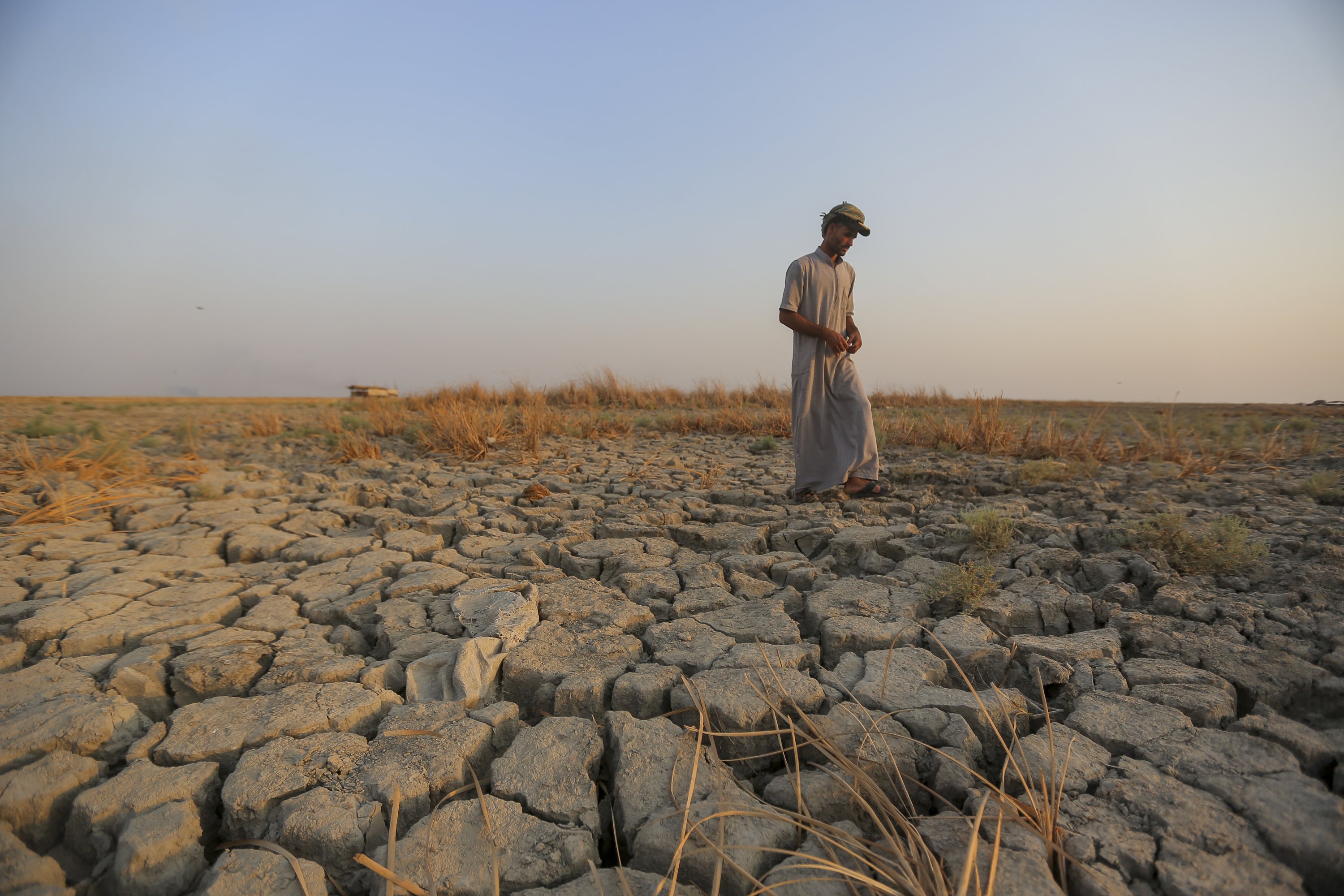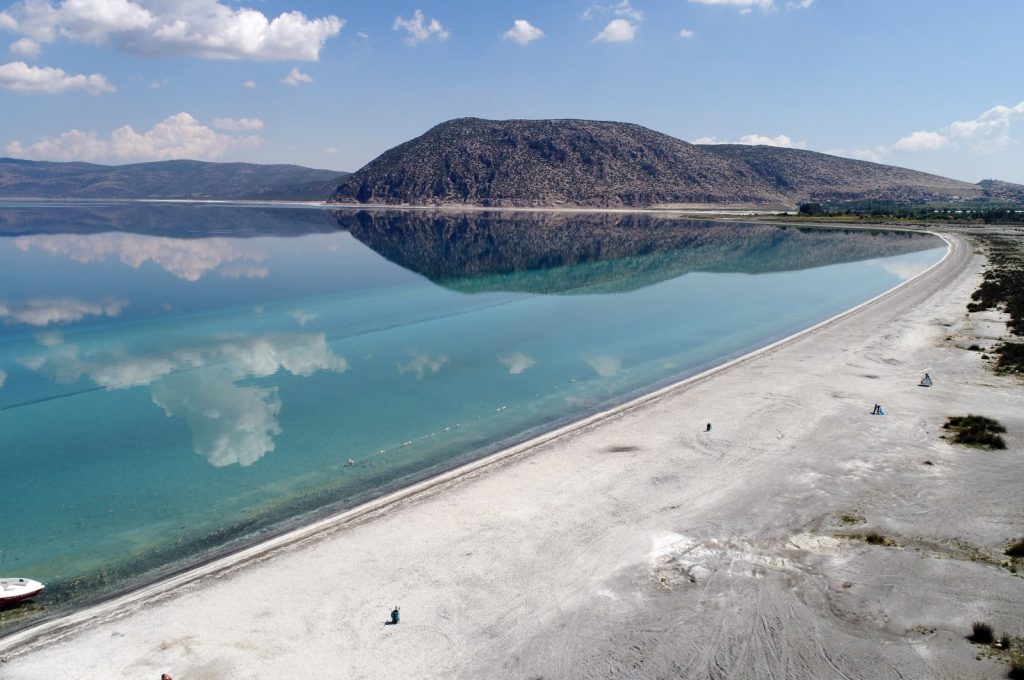Land is life. From the water we drink and food we eat to the air we breathe. The land also supports forests, rangelands, wetlands and other terrestrial habitats supporting millions of species; healthy land is at the heart of it all. And yet, we continue to hurt, damage and ultimately erase its very existence. This is the stark reality of land degradation, a silent crisis threatening the foundation of our planet.
Around 40% of land globally is already degraded, impacting 3.2 billion people, according to the United Nations Convention to Combat Desertification (UNCCD). That, however, is just today’s reality. This is a problem engulfing more land every day; in fact, every second the equivalent of four football fields of land becomes degraded. Every year, this amounts to 100 million hectares of land being degraded.
In Türkiye, the threat of land degradation and desertification is an urgent and growing crisis, with nearly 60% of the country’s land classified as at-risk, according to the Intergovernmental Panel on Climate Change.
This vulnerability is driven by climate change and unsustainable land practices, including deforestation, overgrazing and inefficient irrigation. According to research by Ankara University, the worst-hit regions include Central Anatolia, which has seen significant degradation, and also the Lake Tuz basin, which has experienced severe water depletion and salinity issues due to unsustainable agricultural expansion.
In regions already susceptible to drought, these changes are making the soil less fertile and groundwater increasingly scarce, impacting an estimated 5 million people. UNCCD data shows the economic repercussions of this degradation are far-reaching. Türkiye’s agriculture sector is losing about $1 billion annually in productivity as degraded soil yields smaller harvests and more water is required for crop maintenance. As a result, more and more people are migrating from rural to urban areas.
Dark picture for the future
Globally, recent human history has taken a drastic toll on land. The simple truth is that the longer we take to act on land degradation, the harder it will be to reverse its devastating impact on our land, water and climate.
I don’t say this to sound alarmist. I say it because for far too long it has been an unspoken truth on the international stage, one blighted by inaction. Land is intrinsically linked to our well-being as a planet and people. The UNCCD estimates that 75% of freshwater originates from vegetated land, and vegetation protects 80% of global soil. Losing vegetation leads to the loss of both soil and water resources.
Healthy land ecosystems play a vital role in regulating the climate by sequestering carbon and maintaining water cycles. However, when land is degraded, these functions are compromised, leading to increased carbon emissions and exacerbating global warming. A key study by the Intergovernmental Panel on Climate Change found agriculture, forestry and other land-use activities accounted for 23% of total human-caused emissions.
The same report highlights the critical nature of land to act as a carbon sink, helping to sequester the equivalent of 29% of total CO2 emissions. In short, degrading land not only increases emissions, it erases an invaluable source for removing them from our atmosphere. As an example, land ecosystems and biodiversity are vulnerable to ongoing climate change, and weather and climate extremes; meanwhile sustainable land management is a proven means to reduce the impact of climate change.
Land degradation, drought and desertification have a seismic impact on societies around the world, with the ramifications felt by almost everybody. From depleted agricultural productivity impacting parts of Europe to the extremities of food scarcity and famine, land degradation has left barely a corner of the planet untouched.
Land degradation is also the enabler of drought. When the land is degraded, it loses its ability to retain moisture, further limiting crop yields and increasing vulnerability to drought. Analysis by the World Resources Institute estimates a quarter of the world’s population faces extreme water stress every year, regularly using up almost their entire water supply. That figure is set to rise by 1 billion by 2050 if we do not act. Alarmingly, as the impact of drought is felt with increasing regularity and severity around the world, so too are the demands placed on water supplies by growing populations. The same study forecasts global water demand will increase by between 20%-25% by 2050. It is why we must not just prevent further land degradation, but urgently restore it.
The issue extends far beyond water and food scarcity. In regions like the Sahel, prolonged droughts and desertification have already led to mass migrations and increased competition for resources, resulting in social and political tensions. Indeed, a UNCCD report on desertification estimates that 40% of intrastate conflicts over 60 years were associated with land and natural resources.

Land issues at Riyadh COP16
The situation may seem dire, but there is hope. The UNCCD COP16 in Riyadh, Saudi Arabia in December presents a unique and timely opportunity to deliver lasting impact, not just for land but also climate and biodiversity.
If we are to meet the UNCCD target of restoring 1.5 billion hectares of land by 2030 then we simply can’t afford to wait another two years. Importantly, we understand the issues, and what’s at stake.
The fight against land degradation is not just for scientists and policymakers; it’s a collective responsibility. That is why for the first time at a UNCCD COP there will be a Green Zone, to enable the public, private sector, NGOs, scientific community, and financial institutions, to find and fund lasting solutions. Ultimately, we are doing this to amplify the voices of the 3.2 billion people impacted by land degradation, drought and desertification around the world.
What, then, can we aim to achieve? Securing stronger, tangible and binding commitments from countries on land restoration will help mark a turning point in the fight against it. Land Degradation Neutrality targets are already a critical tool in ensuring action, but the reality is more nations must sign up to them with time-bound commitments to make them truly effective on a global scale. Land restoration can, and should, also be prioritized as an urgent funding need within existing multilateral mechanisms, such as those available through development banks.
Furthermore, the private sector has a critical role to play. For too long land has been a resource to be used and exploited for profit. We must reverse this equation. Land should be protected not just for our well-being, but because countless businesses, supply chains and economies are built on its health. Restoring land is the most effective means to safeguard long-term business and economic security. Indeed, according to the UNCCD, every dollar invested in restoring degraded lands is estimated to bring between $7-$30 in economic returns.
We must see this as an opportunity. Restoring ecosystems and soil biodiversity is among the most effective weapons against weather extremes and climate change. Restoring land will create employment and drive economic growth. In many senses, land restoration pays for itself. We need to stop thinking about the cost and focus on how much more economic productivity, and food and water security could be leveraged globally by increasing investment. Quite simply, not investing in sustainable land management costs trillions of dollars every year. In fact, the UNCCD estimates land degradation puts $44 trillion every year at moderate to high risk, roughly half of global GDP.
In short, there is a tangible cost to inaction, a devastating impact on both global environments and economies that only now are we truly starting to comprehend. I hope this is the beginning of the end of land degradation. COP16 in Riyadh can be the opportunity when we finally mobilize as an international community to arrest land degradation and accelerate restoration. It is the moment to turn this silent crisis haunting so many, into a symbol of global action that reverberates around the world for decades to come.


